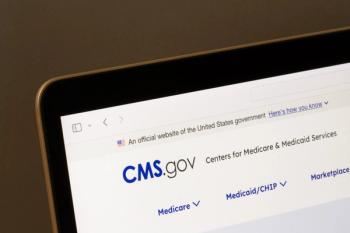
Precision Medicine: A New Role for Pharmacists
The biggest innovation in medicine in the last decade (and how to get in on it).
Precision medicines are undergoing a rapid period of growth and acceptance within the health-care arena, according to a report from Stockholm-based QuintilesIMS Institute. Pharmacists can play a vital role in ensuring that these medicines are used effectively.
Precision medicines are defined as treatments that are tailored to groups of patients based on specific biomarkers or to individuals based on their genetic profile or status, according to the
Related article:
“The dramatic decrease in the cost and time it takes to perform genomic sequencing has contributed significantly to the development of precision medicines,” Aitken told Drug Topics. “Another contributing factor is the understanding that the ‘one-size-fits-all’ approach to medicine is costly, as many patients will not respond to first-line therapies and will receive care that is not beneficial. Development of precision medicines that get the right dose to the right patient at the right time has the potential to provide savings,” he said.
“Precision medicine represents one of the biggest innovations in medicine over the last decade,” said Ali McBride, PharmD, MS, BCPS, BCOP, Clinical Coordinator, Hematology/Oncology,
Off-Label Use
Many of the drugs used as part of this new paradigm are approved drugs that are being used for an off-label use, McBride told Drug Topics. While the majority of these agents are applied to the oncology areas, there have also been advances in rheumatology and cardiovascular disease, he said.
The science is best exemplified for anticancer drugs, said Meindert Danhof, PharmD, Director of Research, Leiden University, the Netherlands. Larotrectinib, for example, is a drug that targets a mutation in the tropomyosin receptor kinase (TRK) gene. “Originally this mutation was discovered in patients with colon carcinoma. It now appears that this mutation occurs in 0.5% of all cancers. So the genetic testing yields the basis for the selection of the drug, rather than the anatomical location of the tumor.”
Related article:
While the science is advancing rapidly, there are challenges, Aitken said. “Health systems will need to adapt to the increasing complexity associated with these agents, from timely and accurate diagnostic testing, though multifaceted supply and delivery chains, to complex protocols, and patient pharmacovigilance,” he said.
“Intricate and evolving protocols are a challenge to health-care systems,” Aitken continued. “Protocols for precision medicine need to be constantly updated to keep up with scientific breakthroughs. This can be a complicated procedure with multiple stakeholders involved.”
Up next: Not just health-system pharmacy
Additionally, Aitken continued, “precision medicines are associated with a significant amount of health-care data. All this data needs to be incorporated and analyzed to provide value back into the health-care system. The amount of data involved presents significant challenges around standardization, storing, and sharing, as well as protecting patient privacy,” he said.
There are also hurdles, he said, in demonstrating sufficient value to payers to perform diagnostic testing and to physicians to routinely screen patients. “These are obstacles to patient access,” said Aitken. Smaller patient pools [of clinical data] can also be a deterrent.”
“The therapies are costly and can run into tens of thousands of dollars per month,” said. McBride. Because many of the drugs are being used off-label, it can be difficult to convince payers to cover the cost.
One of the biggest drivers of reimbursement, he said, are patient assistance program. It is important for pharmacist to understand these programs so they can help navigate between the payer and the patient.
Not Just Health-System Pharmacy
McBride also noted that while precision therapy is commonly delivered through health systems, it is also available to patients through specialty and infusion pharmacies. Pharmacists in all settings need to be aware of the different dosing regimens and delivery systems associated with these drug products, he said.
“The pharmacist is responsible for the quality of the medicinal products; this includes the manufacturing of tailor-made medicines,” said Danhof. “There will be a lot of innovation here. Pharmaceutical companies will prepare the components of the treatment, which are then assembled into the product that is then administered to the patient,” said Danhof, who chaired the recent Pharmaceutical Sciences World Congress in Stockholm.
In assembling these drugs, pharmacists need to be aware that there is a high propensity for the development of resistance, Danhof continued. As a result, the treatments are often complex and based on a combination of multiple drugs. “Such treatments cannot be developed nor be implemented in clinical practice by trial and error. Mathematical models must constitute the basis for this,” Danhof said.
“Pharmacists provide value to clinical decisions for precision medicines by understanding and managing the patient’s total drug profile,” said Aitken. “Pharmacists are also point of care references for dosing and administration and can warn of potential side effects.”
Related article:
“The pharmacist needs to be aware of the mechanism of action of these drugs, and needs to encourage patients to be adherent with therapy,” added McBride.
According to the QuintilesIMS report, 41% of these products are associated with black box warnings for serious adverse effects that require special monitoring by trained clinicians. Side effects that may be mentioned include malignancy, hepatotoxicity, dermatologic toxicity, QT prolongation, and anaphylaxis. “Because of this, pharmacist engagement with patients is important; the relationship that a patient has with a pharmacist can help those side effects be more quickly identified. It’s critical for pharmacists to step up and play the fullest role that they can,” Aitken concluded.
Newsletter
Pharmacy practice is always changing. Stay ahead of the curve with the Drug Topics newsletter and get the latest drug information, industry trends, and patient care tips.





















































































































































